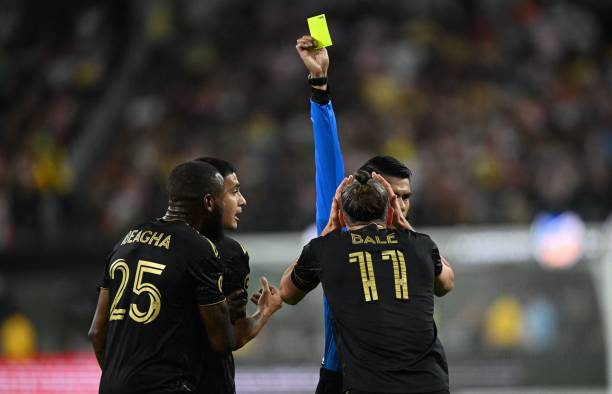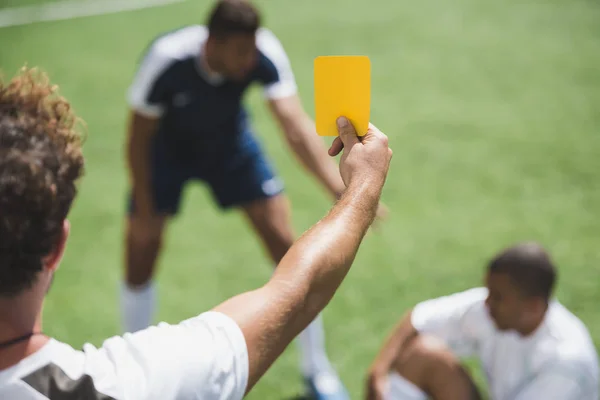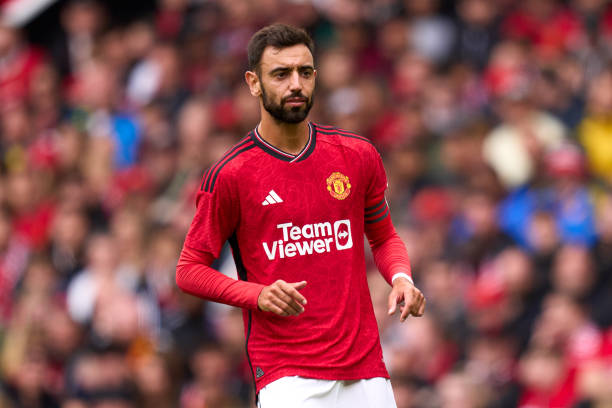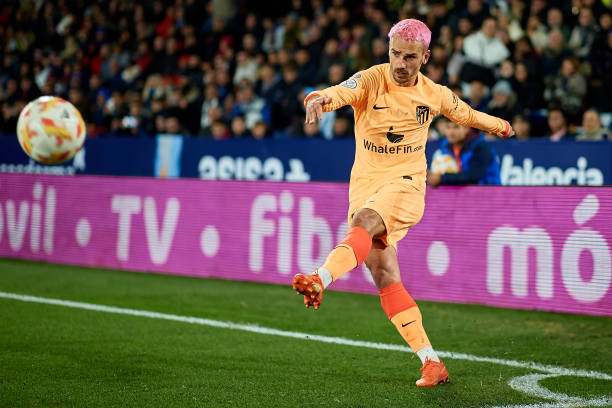There are few sports in existence that elicit as much passion from fans and players as soccer.
If not properly managed, this passion often easily morphs into heated exchanges which can create volatile situations that may result in a threat of violence or outright violence.
If not kept in check, this may easily lead to horrible outcomes on and off the pitch.
Being a contact sport, soccer players often make physical and verbal clashes that intensify the tempo of the game. While this greatly adds to the appeal of the game, it can also lead to ugly scenarios.
Like most sports, the game of soccer is bound by stringent rules and guidelines that keep players, coaching staff, and even fans in check.
Maintaining discipline and level-headedness even in the face of provocative situations is paramount in the game of soccer.
Governing bodies and institutions go to great lengths to make and enforce rules that ensure the game is played and enjoyed with minimal misconduct and violence.
When these rules are flouted, there are stipulated disciplinary measures that can be meted out on and off the pitch.
One of the most common disciplinary measures on the pitch is the issuance of a yellow card to a defaulting player or coaching staff.
What is a yellow card in soccer?
Yellow cards are issued by officials to players and coaching staff as a cautionary tool in cases of dissent, dangerous play, undisciplined conduct, and general infractions on the rules during a match.
A yellow card is a warning and doesn’t amount to dismissal from the match.
However, not all fouls or misconduct will attract a yellow card.
When a yellow card is issued, the carded player remains on the pitch and is allowed to continue the match with the team.
However, when a player receives 2 yellow cards in a single match, the player will be sent off.
A referee cannot issue a yellow card when the match has not started.
Who can give or receive a yellow card?

A yellow card is issued by the officiating referee when a player is deemed to have contravened the rules.
The yellow card is raised by the referee and shown to the defaulting player, who must accept this as a caution. The player’s details are documented by the referee in a small notebook.
All active participants in a match can receive a yellow card, including goalkeepers, potential substitutes and coaching staff, and even medical personnel.
How many yellow cards are you allowed in soccer?
A maximum of two yellow cards can be given to an individual during an active match. Two yellow cards are equal to a red card.
At the reception of the second yellow card, the individual would be mandated to exit the pitch or bench and return to the dressing room.
Yellow cards can accumulate throughout several matches and lead to a temporary ban of the defaulting player or member of staff.
In most tournaments, accumulating a certain number of yellow cards throughout the season can lead to suspensions, bans, or fines.
These suspensions vary across various football jurisdictions.
In the UEFA champions league receiving two separate yellow cards in the group stage will lead to a one-game suspension.
The English Premier League rules stipulate that a player who accumulates 10 yellow cards during the season must serve a two-match ban within the same season.
In the US Major League Soccer, players who receive 5 yellow cards are fined $250 and given a one-match suspension in the subsequent games.
These suspensions can come into effect in other tournaments regulated by the same governing body.
There have been cases of players deliberately receiving yellow cards to be absent from a future match not deemed as too important.
Yellow Card in Soccer Rules: Offenses that can cause a player to receive a yellow card
There are a significant amount of offenses that can cause a player to receive a yellow card. Some yellow card offenses in soccer include:
- Consistently infringing on the laws of the game.
- Delaying the restart of the play, when the ball is put out of play, for a goal kick, corner kick, throw-in, or after a foul or a goal.
- Leaving the field during an active match without permission from the referee.
- Entering or reentering the field without the referee’s permission.
- Any form of dissent by word or action.
- Not keeping the required distance during a set piece, corner, or throw-in.
Yellow card offenses may be a little more subjective sometimes. The referee can issue yellow cards for unsporting behavior.
Unsporting behavior can include offenses like;
- Simulating a foul to deceive the referee.
- Attempting to score a goal by using the hand.
- Deliberately committing a foul to break up a promising attack. (When a foul is done to deny a clear goal-scoring opportunity, it usually attracts a more steep punishment in the form of a red card.)
- Fouls committed with excessive force can also attract a yellow card.
- Removing one’s shirt or covering one’s face with a shirt while celebrating a goal.
- Celebrations that demean opponents or fans.
- Excessive celebrations.
- Players also get cautioned for bridging the perimeter or entering fan areas during celebrations.
After the introduction of the Video Assistant Referee, some additional possible offenses were included. Offenses such as.
- Continually using hand gestures to insinuate a VAR check.
- Entering the referee review area.
How many yellow cards can you get before you get suspended?
The number of yellow cards you can get before you get suspended varies from competition to competition.
In most soccer leagues, such as the English Premier League, accumulating a total of five yellow cards will cause you to miss one game.
In cup competitions, such as the FIFA World Cup, if a player gets two consecutive yellow cards in two matches, he will miss the next match.
Can you get 3 yellow cards in football?
No. You can only be shown two yellow cards in a football match before being sent off.
Interestingly though, during a 2006 FIFA World Cup group game between Croatia and Australia, English referee Graham Poll unknowingly issued three yellow cards to Croatian Josip Šimunić before sending him off.
That was a rare case, and the referee admitted his error. He retired from international tournaments after that incident.
Yellow Card Appeal
Yellow cards can be rescinded post-match, usually after an appeal by the team or affected player.
In cases where a player or team feels that a yellow card was unjustly given, they can appeal to the disciplinary body, which will review the circumstances under which the card was given, and the card may or may not be withdrawn.
The outcome of competitions can also be determined by disciplinary factors, falling under fair play rules. In cases where teams are tied in terms of points, goals, and all other areas, the governing body may resort to a consideration of fair play.
The number of cards accumulated by a team may play a role in determining the winner.
Yellow cards have served as a great deterrent to unsportsmanlike conduct for centuries and have worked effectively to keep our beloved game enjoyable and void of violence.
Which soccer player has the most yellow cards?
Spanish and PSG player Sergio Ramos is reportedly the soccer player who has received the most yellow cards. He has been booked approximately 275 times in his career.
Soccer players who never got a Yellow Card
Despite a yellow card being very common in soccer, there are some soccer players who never received a yellow card. They include:
- Gary Lineker
- Peter Shilton
- Sir Stanley Matthews
- William Beveridge “Billy” Liddell
- William Ambrose “Billy” Wright
- Willian Ralph “Dixie” Dean.
FREQUENTLY ASKED QUESTIONS
Here are some frequently asked questions about yellow cards in soccer:
What is the difference between a straight red card and a second yellow card in soccer?
A straight red card is given for serious infractions such as violent conduct, serious foul play, spitting at an opponent or any other person, denying an obvious goal-scoring opportunity by handling the ball (except for the goalkeeper within their penalty area), and denying a goal or an obvious goal-scoring opportunity by committing an offense punishable by a free kick or penalty kick.
A second yellow card results in a red card as well, but it’s given when a player commits two cautionable offenses in the same match.
How long does a yellow card last in soccer before it resets?
In most professional leagues, yellow cards accumulate over a set number of games or over the course of a tournament.
Once a player reaches the threshold for suspension, the count does not automatically reset. However, after serving a suspension, the player’s yellow card count may reset or be reduced, depending on the league or tournament rules.
The specific reset policy can vary, so it’s important to refer to the regulations of the particular competition.
Can a yellow card be overturned in soccer?
Once a referee has issued a yellow card, it typically stands for the duration of the game. However, some leagues have implemented review systems, such as the Video Assistant Referee (VAR), where decisions can be re-evaluated.
If a review clearly shows that the referee made a mistake, a yellow card can be rescinded. This is more common with red cards, and the process for challenging a card varies by league and governing body.
What happens if a goalkeeper gets a yellow card in soccer?
If a goalkeeper receives a yellow card, they are cautioned just like any other player on the field. They must be more careful to avoid a second yellow card, which would result in a red card and ejection from the game.
The team would then have to substitute another player off to bring on a substitute goalkeeper, or an outfield player would have to take over the goalkeeping duties.
How did yellow cards originate in soccer?
The card system was introduced by referee Ken Aston after the 1966 FIFA World Cup to provide a clear and universal language for players and spectators, regardless of the language they speak.
The idea came to him when he realized that traffic lights are universally understood, with yellow indicating caution, and red indicating stop or expelled.
Can a substitute receive a yellow card before entering the field in soccer?
Yes, a substitute can receive a yellow card before entering the field. If a substitute or substituted player engages in unsporting behavior, shows dissent, or violates conduct rules while on the bench, the referee can issue them a yellow card.
This includes warming up in an unauthorized area or entering the field of play without the referee’s permission.
YOU SHOULD ALSO FIND OUT:
- What Is The Meaning Of Relegation In Soccer?
- What Is The Average Distance Run In A Soccer Game?
- What Is The Role Of A Number 10 In Soccer?
- What Is The Average Height Of Soccer Players?
- What Is The Role of Number 9 In Soccer?
- What Is A Clean Sheet in Soccer? A Beginner’s Guide
- What Is The Role Of A Number 6 In Soccer?








